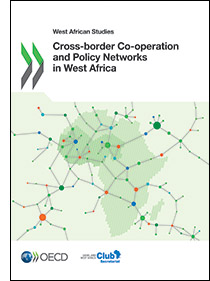Greater co-operation between border areas of the Sahel & West Africa is required to boost the region’s economic growth and reduce its security threats
Paris, 20 January 2017 - In its latest publication, Cross-border Co-operation and Policy Networks in West Africa, the Sahel & West Africa Club (SWAC/OECD) Secretariat has called for greater co-operation between border areas in order to boost economic growth and reduce security threats. Laurent Bossard, Director of the Club’s Secretariat, said “it is now more essential than ever that countries work together for the prosperity of the Sahel and West Africa region”.

“The region’s population is forecast to increase from 367 million in 2015 to 538 million in 2030. This major demographic change brings immense economic opportunities through more concentrated and larger markets. This population boom will also naturally increase the circulation of goods and people across administrative boundaries, including regional migration.”
In his preface, the rise in border interactions is seen by Aguibou S. Diarrah, former Ambassador of Mali and former Co-ordinator of the African Union’s Border Programme, to make further analysis on their functioning essential. “If borders in West Africa are to aid integration and peace, we need to better understand the potential for co-operation in border regions and how people working on policy in these locations collaborate. This is key in strengthening, for example, regional dialogue on the reinforcement of border co-operation and in responding to security threats.”
The book differentiates itself from previous studies, going beyond examinations of border legislation and organisational structures to methodically map-out the regions where the potential for cross-border co-operation is strongest. It does so by employing social network analysis, a methodological technique — seldom applied in the development field and in West Africa — which sheds light on the largely informal dynamics of networks of policy makers and local actors working on cross-border issues.
The resulting analysis reveals for the first time how cross-border governance networks are organised, how information circulates between partners, and which actors are considered to be the most central. The book presents a double level of analysis: regional and local, in particular the Senegal River region, Liptako-Gourma (an area crossing Burkina Faso, Mali and Niger) and Lake Chad, to illustrate these differences.
The work identifies areas with the most potential for cross-border co-operation from an analysis of seven indicators that cover a range of economic, environmental, political and social issues. Those regions with an abundance of border markets, high population potential and shared resources showed the greatest potential, such as the borders between Niger and Nigeria and in the Accra-Lagos conurbation.
The analysis also examined policy makers and local actors operating in the region, asking: Where are the geographical boundaries of co-operation? Which locations and actors are most influential in terms of co-operation? And, which regions should take priority for cross-border co-operation?
The originality of the publication, both in the subject it addresses and its method of analysis, provides readers with many points for reflection, including:
- The central role that cross-border co-operation plays in the process of regional integration and stability;
- The functioning and the role of largely informal networks in border economic development;
- The regions in West Africa that have the greatest potential for cross-border co-operation and possible ways and strategies to support their efforts;
- The contribution of place-based policies that are better adapted to the context of each region and the transfer of skills to decentralised organisations.
For further information on the publication, please visit the SWAC/OECD website or contact Lia Beyeler (lia.beyeler@oecd.org).
Related Documents

